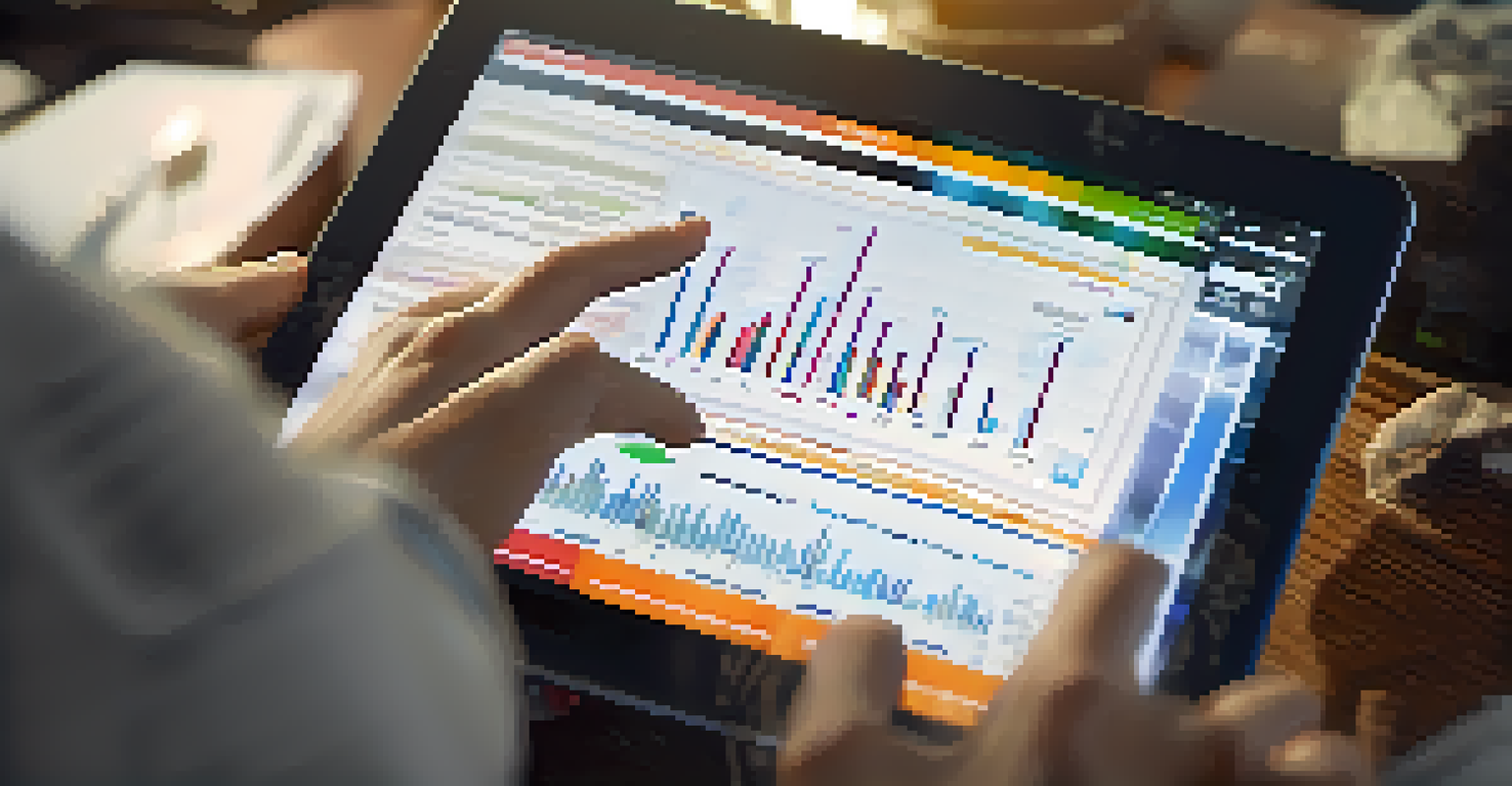Analyzing Market Trends: Tools and Techniques

Understanding Market Trends: What You Need to Know
Market trends are patterns that reveal how consumer behavior changes over time. They can indicate shifts in demand, preferences, and overall market dynamics. By analyzing these trends, businesses can make informed decisions that align with consumer needs.
In today's complex and fast-paced world, data is the new oil.
Recognizing market trends can be likened to watching the weather; just as meteorologists use data to predict storms, businesses use market analysis to anticipate shifts. This foresight helps companies adapt their strategies proactively rather than reactively.
In today's fast-paced world, staying ahead of market trends is crucial for maintaining a competitive edge. Understanding the basics of market analysis sets the foundation for effective strategy development.
Key Tools for Analyzing Market Trends
There are several key tools available for analyzing market trends, including Google Trends, social media analytics, and market research reports. Google Trends, for example, allows users to see the popularity of search queries over time, giving insight into consumer interests.

Social media platforms provide a wealth of data about consumer sentiments, preferences, and emerging trends. By leveraging these analytics, businesses can tailor their marketing strategies to resonate with their audience.
Market Trends Drive Business Strategy
Analyzing market trends helps businesses anticipate changes in consumer behavior and adapt their strategies accordingly.
Market research reports, on the other hand, often provide comprehensive insights into industry trends and consumer behavior. Using a combination of these tools can create a robust analysis framework.
Techniques for Effective Market Trend Analysis
When it comes to analyzing market trends, several techniques can be employed, such as SWOT analysis, competitive analysis, and trend forecasting. A SWOT analysis helps identify strengths, weaknesses, opportunities, and threats within a market, offering a holistic view of the landscape.
The goal is to turn data into information, and information into insight.
Competitive analysis involves studying competitors to understand their strategies and market positioning. This insight can reveal gaps in the market that your business can exploit.
Trend forecasting uses historical data to predict future market behaviors. By combining these techniques, businesses can develop a comprehensive understanding of the market.
The Role of Data in Market Trend Analysis
Data plays a pivotal role in market trend analysis, providing the evidence needed to make informed decisions. Whether it's sales figures, customer feedback, or market surveys, having accurate data is essential for reliable analysis.
Think of data as the foundation of a house; without a solid base, everything built on it is at risk. Similarly, poor data can lead to misguided strategies that fail to meet market demands.
Data is Essential for Analysis
Accurate data collection and analysis form the foundation of effective market trend evaluation and decision-making.
By prioritizing data collection and analysis, businesses can ensure they have the insights necessary to navigate changing market conditions confidently.
Leveraging Technology for Trend Analysis
Technology has revolutionized how we analyze market trends, providing tools that automate data collection and analysis. Software like Tableau or Power BI allows businesses to visualize data, making it easier to identify patterns and insights.
Additionally, machine learning algorithms can analyze vast amounts of data quickly, identifying trends that may not be immediately apparent. This level of analysis can uncover hidden opportunities for growth.
Embracing technology not only enhances the accuracy of market analysis but also saves time and resources, allowing businesses to focus on strategy implementation.
Interpreting Market Trends: Best Practices
Interpreting market trends effectively requires a combination of analytical skills and intuition. It's important to look beyond the numbers and understand the context behind the data. For instance, a spike in sales might be due to a seasonal event rather than a lasting trend.
Best practices include cross-referencing data from multiple sources and seeking feedback from industry experts. This holistic approach can prevent misinterpretation and ensure a well-rounded view.
Technology Enhances Trend Insights
Leveraging advanced technology and tools can streamline data analysis, revealing hidden market opportunities for growth.
Regularly reviewing and updating trend analysis is also vital, as market conditions can change rapidly. Staying agile allows businesses to pivot their strategies as needed.
Real-Life Examples of Successful Trend Analysis
Many successful companies have used market trend analysis to their advantage. For instance, Netflix utilized data analytics to identify the growing demand for original content, leading to the creation of hit series like 'Stranger Things.'
Similarly, Starbucks analyzes customer preferences and seasonal trends to introduce new products that resonate with their audience, ensuring they stay relevant in a competitive market.

These examples illustrate how effective trend analysis can drive innovation and growth, proving that understanding market dynamics is key to success.
Future of Market Trend Analysis: What to Expect
As technology continues to evolve, the future of market trend analysis looks promising. Emerging tools powered by artificial intelligence and big data will offer even deeper insights into consumer behavior and preferences.
Moreover, the integration of real-time data analysis will allow businesses to respond to market changes almost instantaneously. This agility can be a game-changer in maintaining competitiveness.
Staying informed about advancements in market analysis tools and techniques will be essential for businesses looking to thrive in an ever-changing landscape.